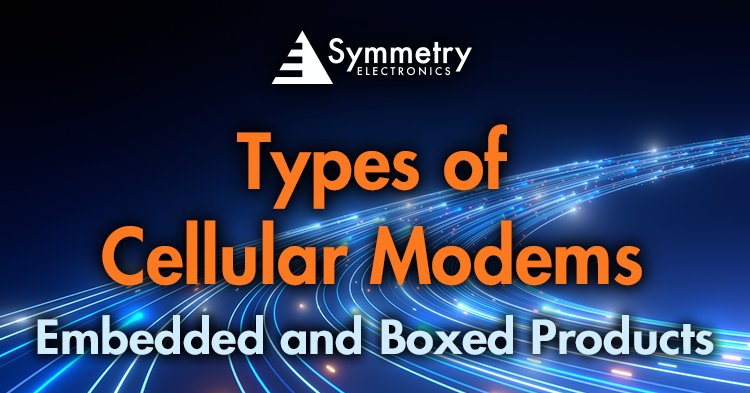Types of Cellular Modems: Embedded & Boxed products

The versatility of cellular devices makes them an excellent communication tool for your product. When you explore the world of cellular modems and modules, the plethora of available options will astonish you. Besides selecting a reputable supplier offering top-notch products, several variables demand consideration, including the choice of cellular technology, carrier network, and the specific type of cellular device suitable for your needs.
If you’re seeking rapid solutions, have limited engineering resources, or wish to avoid certification burdens, cellular modems are an excellent option. Combining a cellular module with hardware interfaces, antenna design, and SIM card slots, a modem can even include additional radios like GPS/GNSS, Bluetooth, or Wi-Fi. The End-Device Certification of a modem eliminates the need for customers to conduct additional testing and certification. Cellular modems come in two primary types: Embedded Modems and Box Products.
What are Embedded Modems?
Embedded modems are built on top of cellular modules. They integrate a cellular module with all the bells and whistles required to make the module work, such as antenna design, power supply design and interfaces, etc. These embedded modems are end-device certified so customers do not need to certify their products. This helps reduce the design efforts required by customers resulting in quicker time to market.
Suggested Solutions
What are Box Products?
A box product, as the name suggests, is a comprehensive solution that comes with its own enclosure. These products are also end-device certified, alleviating the need for customers to invest resources in the certification process. With a box product, you can achieve instantaneous cellular connectivity by connecting it to external systems via USB or serial interfaces. Moreover, it offers antenna connectors and SIM card slots, ensuring quick and easy installation.
A box solution is the quickest way to add cellular connectivity to any system. It requires the least amount of design efforts and quick to market. These are ideal for mission critical applications such as ATMs, Kiosks, and store networking.
Suggested Solutions
Embedded Modems vs Box Products
Both embedded modems and box products are quick and easy ways to add cellular connectivity to any system, but some considerations while choosing one over another should include:
- Time to Market: As opposed to embedded modems, box solutions enable a faster time to market. With the device fully developed and ready to use, customers require fewer hardware design efforts on their side. Cost of a solution: Embedded modem solutions are available at a lower cost point than box products.
- Hardware Design & Development Efforts: As previously mentioned, a box solution is ready to use immediately. Once power is provided, the router should be ready for communication. On the other hand, with embedded modems, certain aspects of the design, such as the enclosure, still need to be developed.
- Physical Dimensions: Embedded modems are significantly smaller than box router solutions, offering a compact form factor. However, to house the device, an enclosure needs to be added, which may result in a final size that is comparable to a box solution.
Conclusion
In conclusion, both embedded modems and box products offer valuable solutions for seamless cellular connectivity. The decision ultimately hinges on factors such as time to market, cost, hardware design efforts, and physical dimensions, ensuring you make the right choice to suit your unique requirements and objectives. Embrace the power of cellular technology and elevate your products with swift and reliable communication capabilities.
Considering an embedded or box solution in your design? Our knowledgeable team of Applications Engineers are experts in wireless technologies and are available to assist you in finding an ideal match for your device. For more information, contact Symmetry Electronics today!







.png)
.png)
.png)